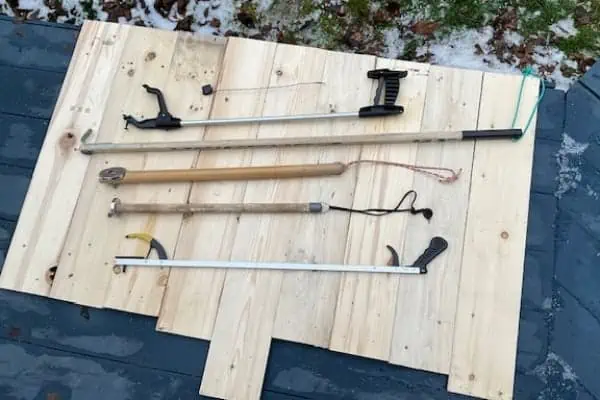On a recent visit to a friend’s place I noticed that his axe handle had a 10 to 15 centimetre warp, and the head was loose and rusty.
I’ve never seen a warped handle, but all the problems were a result of lack of care. Swinging an axe with a loose head is very dangerous because the head may come right off and can be launched quite a distance from a full swing.
The loose head and rusty head are common and easy to remedy. A wire brush will get the rust off. If motor oil is applied to the head after, this will prevent future rusting.
The looseness may be the result of a missing wedge, which can be replaced easily. Standing an axe in a pail of water will often tighten up the handle-fit caused by the handle drying out and shrinking.
Axes deserve more TLC than they usually get. Everywhere you look the household axe is left stuck in the chopping block where it endures whatever the weather has to offer. This can be very hard on a tool that we all rely on to get our wood ready for the fire.
Axes should be kept inside during the winter, when possible. The cold, dry winter air can shrink the handle, making the head loose. The handle can become very brittle and more likely to break while splitting firewood.
The synthetic covering of a steel-handled axe, such as an Estwing, can shatter when used after the axe has been left out in extreme cold. A wipe of linseed oil on the handle of a regular axe, and motor oil on the head, is all the maintenance the tool requires, other than being kept sharp.
Edged tools such as axes and knives cut more users when they are dull than when they are sharp, because the dull edge does not bite into the work. An axe-head in really bad shape can be lightly ground to smooth out nicks on the edge, but care must be taken not to get it too hot in the process because that can effect the temper of the steel.
Normally axe files are used to sharpen axe heads. The filing is done from the main part of the head towards the edge, using the full length of the file. A whet-stone can be used to finish the job.
The axe grip for a right-handed person has the left hand at the bottom of the handle and the right hand up towards the head on the upswing, and on the downswing the right hand slides down next to the left hand.
The chopping block should always be larger than the piece being split, so that if short-swung, the axe will go into the chopping block. This minimizes the risk of injury.




